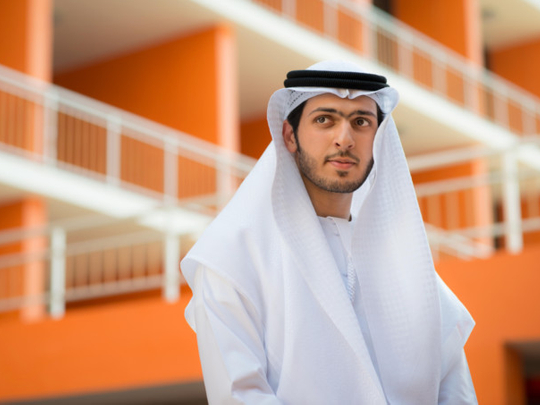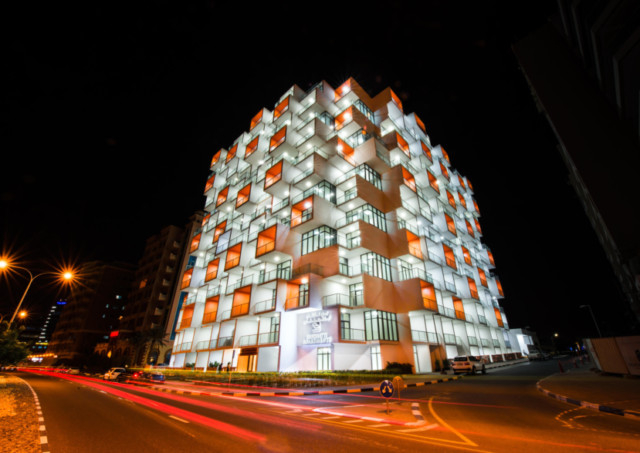
Dubai has been witnessing a series of new residential and commercial developments with iconic architecture, thanks to a new breed of developers and architects who are passionate about changing the urban landscape of the city.
One such firm, Binghatti Developers, appears to be on a mission to create a unique brand identity. And when the property developer is headed by an architect, whose sole mission is to not just create iconic architecture but also build it for the middle class, it’s almost sure to change the rules of the game.
That’s exactly what Binghatti Developers have done with its 30-odd projects, both completed and under construction. Visitors to Dubai Silicon Oasis (DSO), where more than 70 per cent of their existing projects are located, will not miss the grand opulence of the architecture of these Binghatti buildings.
Binghatti Apartments, for example, was one of the first projects in DSO and was the winner of the 2016 Cityscape Global Awards for Best Built Residential High Rise Project.
“We are here to create a real estate brand,” says Muhammad BinGhatti, CEO and Head of Architecture. “Anyone who sees a project built by us should be able to immediately identify it as built by Binghatti. It is like creating Porsche and Ferrari. There is no such thing being done in the UAE or anywhere else.”
With such a strategy in mind, every single property it has built is aimed at creating a unique design. “Our core value is to deliver a renaissance of property by using iconic architecture as a tool,” he says.
Defining iconic architecture as creating something that catches the eye and that is different, he adds, “The criteria to create an iconic building is based on its size, shape, aesthetics, location and urban relevance. We have taken into consideration all these factors when we go about our projects.”
The developer has an in-house design team also headed by the CEO that has been entrusted with a mandate to come up with designs that are modern, yet match the cultural significance of the locale.
An entire design unit of 20 architects works solely on the concept designs to ensure that the planned projects are designed as per criteria and match today’s cosmopolitan Dubai market. “When we design our projects, we have specific criteria,” says BinGhatti. “Firstly, it should be relevant to the society that we are designing for. We need architecture that is culturally relevant, a macro criteria, and the community within which it is located, a micro element.”
One of its latest projects that was completed in DSO, the Binghatti Pearls, for example, is named and designed keeping in mind the cultural aspects of the UAE.
“The building epitomises the progressive history of Dubai and the UAE,” says BinGhatti. “We wanted to take the history of Dubai as a pearl-diving village and transform the idea into an iconic architecture and really bring it into a modern understanding. While the design elements incorporated the shape of a pearl, we did not use traditional methods such as domes, etc. Instead, the architectural design blends form and function. It also maximises comfort in the building’s living spaces.”
The property developer, a relatively new entrant into the UAE market, has been operating since 2002 and was initially involved mainly building for institutional clients. It was only in 2014 that it entered into the retail segment, building residential properties for end use. “But right from the beginning it was our strategy that what we build should stand out and be different. When we entered the residential segment, we wanted our buildings to continue to maintain that iconic feel to it, but at the same time wanted to make it affordable to the common people,” says BinGhatti, arguing that the company was very clear about who they were building for. “We had clearly decided to target the middle segment. But that raised a challenge. The cost had to be under control.”
In an effort to value engineer the cost, the company devised a strategy of vertical integration, where it signed up an exclusive agreement with a contracting firm. “The contracting firm works exclusively for us, which enables us to maintain our timescale, cost and quality and deliver exactly the way we intend it to be with the same quality.”
The developer has also entered into similar agreements for industrial processing such as aluminium manufacturing and joineries. BinGhatti says these agreements, along with procurement of construction materials from a single supplier, has helped the company control both the cost and timescale. “We specifically realised the need for such a plan ever since we started developing retail projects. It was very important for us to meet deadlines,” he says.
Explaining the success of their projects, BinGhatti says most of are sold as soon as they are built. “Any one who comes to buy from us love us for our designs,” says BinGhatti. “That is our number one selling point. We have been successful in maintaining a certain standard. Today, even people who are not living in the UAE know about our buildings.”
The developer is currently working on about 15 new projects at various stages of construction, mostly in upcoming developments such as DSO, Dubailand, Jumeirah Village Circle, Dubai Residential Complex and areas around the World Expo 2020 site.
The developer is also working on starting new projects in areas such as Business Bay.
“We will be announcing some new projects there. We are in the process of acquiring land,” says BinGhatti, adding that the projects may be announced during Cityscape Global in September.












